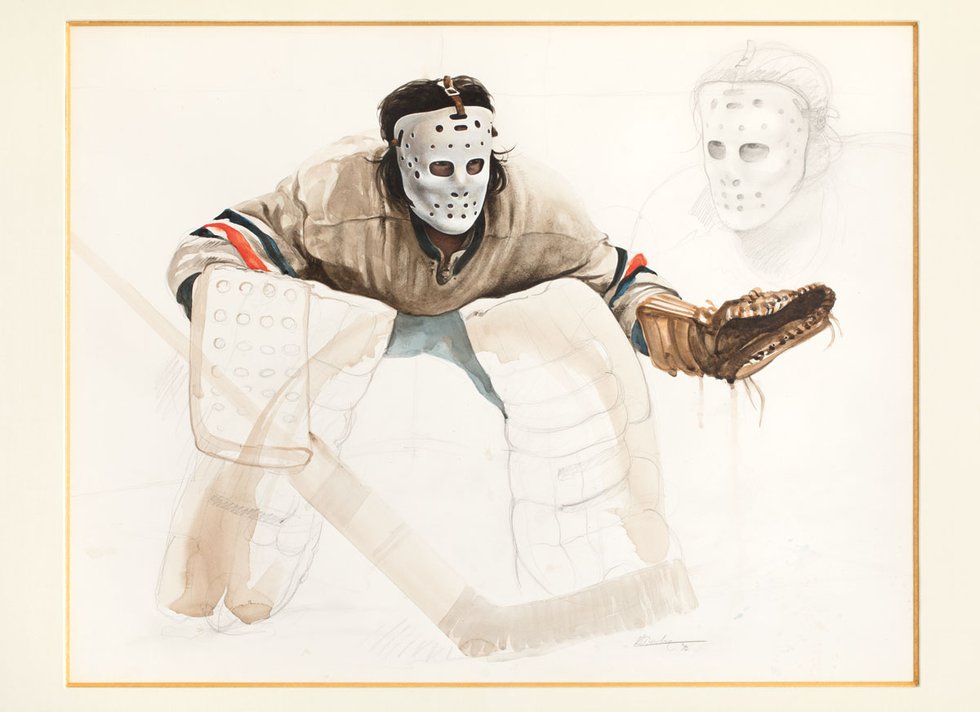
Danby: Beyond the Crease
A friend of Ken Danby donned goalie pads and mask in 1972 to pose, crouched, for what became one of Canada’s most iconic paintings, At the Crease.
The artist showed the just-completed tempera painting to his 20-month-old son Ryan, who suddenly burst out crying, Danby recalled in a manuscript he wrote before his death in 2007. Danby was thrilled the realistic, menacing-looking picture had frightened his son: “I knew it was potent.”
Danby’s previously unpublished manuscript forms the backbone of this new coffee-table book, Ken Danby: Beyond the Crease (Goose Lane Editions).
The book contains essays by Ihor Holubizky, curator of the McMaster Museum of Art in Hamilton, and Greg McKee, Danby’s former printmaker. It coincides with a travelling retrospective of Danby’s work at the Art Gallery of Hamilton.
The book analyzes Danby’s realist paintings yet generally avoids overt praise or criticism.
“Danby’s work can be characterized by the absence of ambiguity, irony or contradiction (which are hallmarks of the modern and contemporary age), yet open to interpretations,” writes Holubizky.

Ken Danby, "The Skates," 1972
Throughout his career, Danby was hugely popular with the masses but less appreciated by art world elites, who felt his work lacked gravitas. Holubizky says At the Crease is dramatic and detailed but does not advance “any sense of narrative because there is none.” He’s right. There’s no hint of a story compared to the mysteries offered by an Alex Colville scene. But it’s still a compelling painting.


